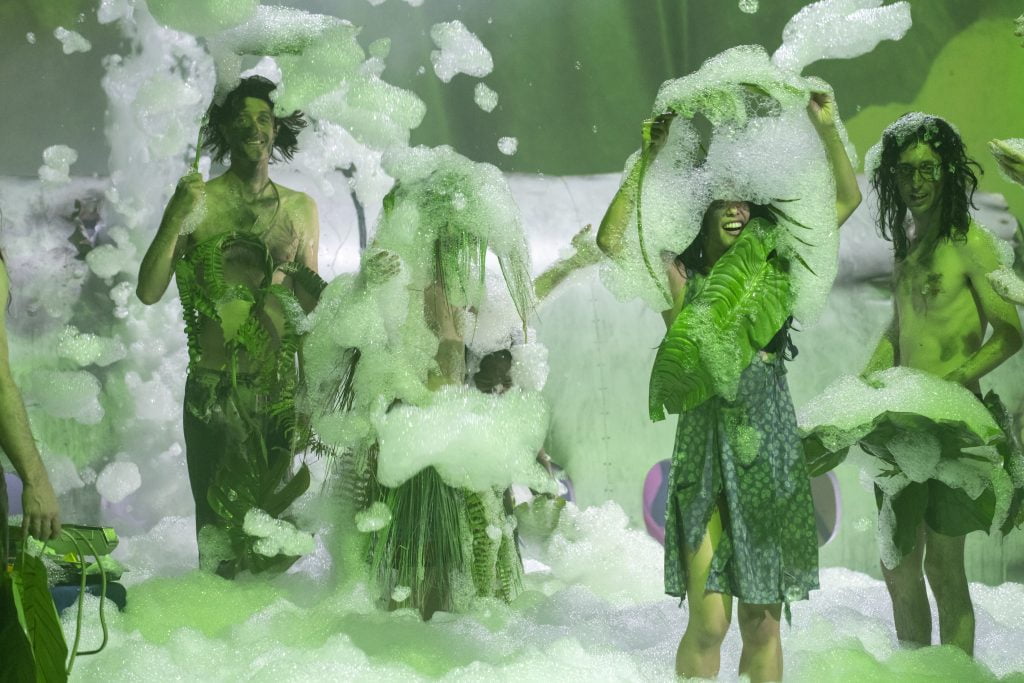
- News
What comes after the catastrophe?
Dramaturg of Crash Park, Camille Louis, reflects on the performance. Is the crash in Crash Park the end or a new beginning?
Crash Park shows an outlook on our modern world. We live in a worldwide disaster park where everything is gradually falling apart – the ethos of the Enlightenment, the advances of science and an economy prone to endless ‘crises’, humanistic ideals, and more importantly, humans. We are collectively sinking. The fall has become a fixture of our lives and makes us impervious to any uprising. We, the survivors, penned in to our gated islands, are looking at those shipwrecked ships, transfixed, awed, grounded and ‘crash-landed’.
But what if the crash is considered not as the end and the inescapable fate of our human trajectories but as a beginning? What comes after the forced catastrophe, the end of accepted, authorized and organized speech? In the theater, it is supposedly the moment of poetry when speech frees up as it breaks out of its normalized framework, leading ‘us’ beyond rationalism toward the excesses of the imagination, the fable, and the potential but unlikely pairing of reality and fiction. However, the highly contemporary artist Philippe Quesne brings his signature language to a journey between an archaic theater that indulges itself in beginnings – beginnings of worlds, beginnings of languages that do not always involve words, beginnings of images, etc – and the revived experience of a present that always comes next.
As this paradoxical point of regained time, images are turned on their head and the island depicted by the play appears simple, uneventful and mystery-free, as if it had always been there. It is not the island of our tragic modern age but instead the little utopian place that we trivially occupy. There is no fate any longer. The play begins with a disaster and when the end is at the beginning, what remains for us takes on the appearance and quality of shared time, a common duration that we can occupy while keeping ourselves occupied. Thus, the odd little survivors of a plane crash lead us into occupation attempts that do not feel like representational ploys or talking points. Instead they convey the remains, effectively, the survivals of our current utopias that today’s doomsayers have diagnosed as ‘finished’: urban development zones, makeshift cities resulting from some kind of occupation (jungles, disused areas, abandoned buildings), phalansteries transformed by the successive attempts of communal living that fill the history of art and the history of men and women, epitomizing occupation forms that hold up not through social rules but by the simple fact that we hold on to them. Together, without any layout.
Before the ‘penning’ of our lives became the new order of a border-expanding world that spreads us into islets separated by police-guarded and militarized seas, before the word ‘park’ was narrowed down to only one meaning – ‘closed space’ – it was a heterotopic space, an ‘other space’ like the garden or the island, right next to us. Sometimes, a few illogical artists and dreamers give us a tour of it, not taking us back to a lost past but to the junction between an endless ‘before’ and an after that becomes this present from which we can start.
Crash Park can be seen on Thursday 31 Octobre at SPRING in Autumn.